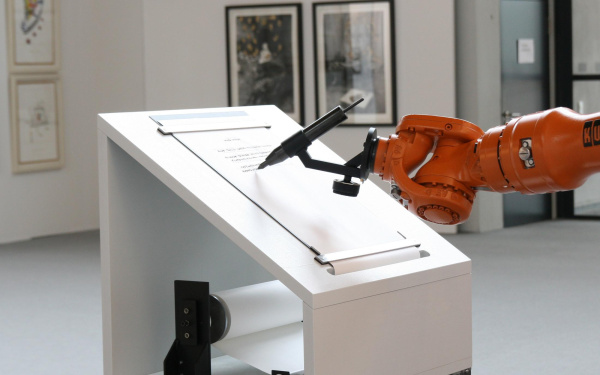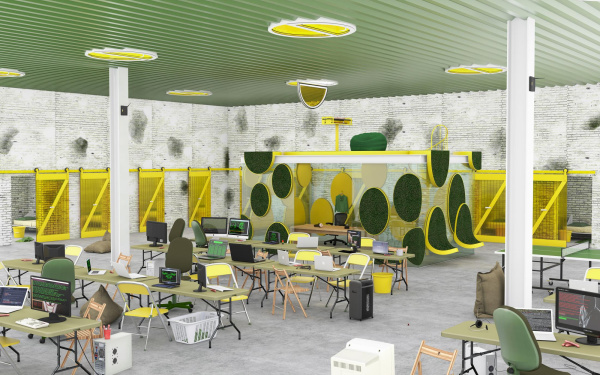#Labor&Production
#Industry4.0 #InternetOfThings #Programming #SmartFactories #Automation #Work4.0
The desire for on demand goods and services, customized to one’s personal tastes and available 24–7, is steadily increasing. It is a phenomenon of the digital economy, a business model that cuts across sectors – including manufacturing, services, transportation, and telecommunications – which is heavily reliant on information technology. [1] This model is reshaping the organization and management of the entire value chain of consumer goods and putting in place a new infrastructure. What makes this business model possible is the real-time networking of products, processes, and infrastructure, as well as related customer services via the Internet. This enables rigid value chains to be transformed into highly flexible value networks.
The approach has been termed #Industry4.0 and is deemed to constitute a fourth industrial revolution. It is characterized by its interoperable design where machines, devices, sensors, and people are connected and can exchange relevant information in real time over the #InternetOfThings (IoT). This transparency enables dynamic, efficient production processes that can be optimized on the basis of different criteria such as cost, availability, and resource consumption. Software and machines operate autonomously and do not require complicated #Programming to meet new requirements, which makes it possible to react fast to individual customer requests. Individual parts of the chain »know« what they are, where they belong, how they need to proceed, and can interact with the production plant. The plant then decides by itself what should be done in accordance with priority and time frame. In these modular structured #SmartFactories the implemented software recognizes defects or mistakes at an early stage and is able to counteract them. [2]
Industry 4.0 is as yet a developing process. To work successfully, it will require a great deal of standardization and uniformity on an international scale. New forms of cooperation between companies across sectors both nationally and globally need to be created. The smart factory’s highly flexible value networks call for the harmonization of #Interfaces (see key area #Encoding); that is, a reference architecture, a set of uniform definitions and methods. It necessitates a common structure and language for standardized description and specification of systems. Industry 4.0 brings many challenges to IT and data security, which can compromise the integrity of production processes. Similarly, it raises legal issues that need regulation, concerning data protection (corporate, employee, and consumer) and liability for automated systems. [3]
However, the greatest transformation that the new business models bring with them is the way in which labor is organized. Routine and low-skill jobs are increasingly threatened by #Automation, for they are being taken on by intelligent machines and #Robots (see key area #MachineLearning). Employees are obliged to acquire a much broader range of skills which allow them to take action and make decisions that #Algorithms (see key area #Encoding) cannot. Considering these changing dynamics of labor, employees will need to be trained and qualified for new roles, be more flexible and mobile. This transformation has been termed #Work4.0. [4] In this economy knowledge is the key resource in which everything is geared towards innovation. The changeover from a labor-based society to a knowledge society is imminent. Fewer people will be top wage earners, fewer people will have less (routine) work to do, and fewer people will do more (highly technical and highly qualified) work. Knowledge and know-how will be the new gold, the new oil. At one end of the spectrum, the workplace increasingly adapts to more flexible and dynamic structures that cater to individual needs in order to harness creativity. Yet only the top-end workers receive these benefits as well as profit from healthy and family-friendly working arrangements. The other end of the spectrum may resemble the manual labor factories for software engineering similar to the Silicon Valley accelerators.
Yasemin Keskintepe
[1] See Nick Srnicek, »Platform Capitalism,« Theory Redux series, Polity Press, Cambridge (UK), 2017, pp. 4–5.
[2] See Bundesministerium für Wirtschaft und Energie, »Industrie 4.0 und Digitale Wirtschaft: Impulse für Wachstum, Beschäftigung und Innovation,« Bundesministerium für Wirtschaft und Energie, Berlin, 2015.
[3] See Bundesministerium für Bildung und Forschung, »Zukunftsbild Industrie 4.0,« Bundesministerium für Bildung und Forschung, Berlin, 2015.
[4] See Ned Rossiter, »Software, Infrastructure, Labor: A Media Theory of Logistical Nightmares,« Routledge, New York, 2016, p. 109.
Articles
Videos
ICD/ITKE Research Pavilion 2016–17
Industrie 4.0 – Deutschlands vierte industrielle Revolution
9:30 min.
Autonomes Fahren – Wie funktionieren autonome Fahrzeuge?
2:08 min.
Industrie 4.0 – The Fourth Industrial Revolution
5:34 min.
Documentary | The Fourth Industrial Revolution
11:30 min.
How It Works: Internet of Things
3:38 min.
Industrie 4.0: Schichtwechsel – Die Roboter übernehmen
44:00 min.


